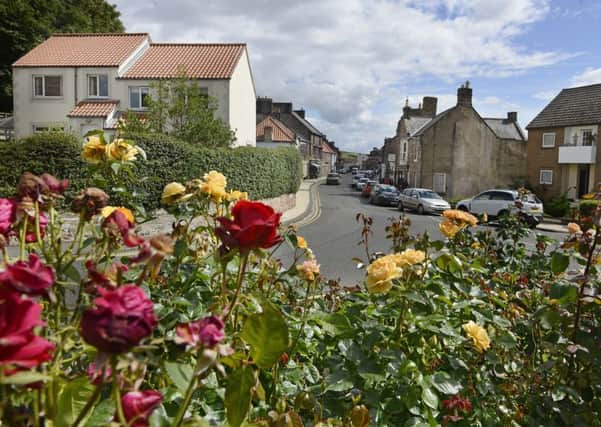Glendale, History Society


Historian Dr Ian Roberts spoke on Agriculture In Wooler And Its Environs, 1800 To The Present.
He emphasised that throughout history agriculture has responded positively to the challenges that social and political changes have faced it with.
Advertisement
Hide AdAdvertisement
Hide AdBetween 1600 and 1800 a number of things happened in England that changed agriculture. Land was enclosed and became more managed, new crop rotations were introduced, and animals began to be bred for desirable characteristics, such as wool length and carcass size.
A report in 1770 was critical of the state of agriculture in Northumberland. It took forward-looking farmers from Durham and Scotland to turn things around.
Foremost among these were the Culley brothers, who came from County Durham to Fenton in the late 18th century and began making the land more productive by drainage, liming and the use of manure. These practices are accepted today, but were revolutionary at the time.
Meanwhile, war, the industrial revolution and a rapidly growing urban population meant that meat and corn came into demand as never before.
Advertisement
Hide AdAdvertisement
Hide AdMatthew Culley and his sons developed the Cheviot and Border Leicester breeds of sheep, which went all over the globe.
On the arable side, Sir James Caird started a five-crop rotation system, growing oats, turnips and grain, with two years of grass to feed and refresh the land – a system unique to Northumberland.
Other landowners, seeing how the Culleys, now of Coupland Castle, prospered, soon followed. Tankerville, Grey, Northumberland, Delaval and Robson of Belford all adopted new methods.
The idea of ‘continuity on the land’ became important. Farms were let on longer tenancies, often passing from father to son, and wages and living conditions improved. The legacy of that are the rows, squares and steadings seen in the area today.
Advertisement
Hide AdAdvertisement
Hide AdThe advent of the railway to Glendale in the 1880s brought big changes. For the first time goods and animals could be moved faster than a man on horseback. This brought an end to droving, but it did mean that produce could be transported further.
In the 20th century demand continued to rise and domestic production could not keep pace. This led to mechanisation and a huge trade in cattle from Ireland, which only ceased in 1971 with Britain’s accession to the Common Market.
At that point Dr Roberts brought his narrative to a halt, except to mention that modern agri-business can be a lonely occupation. Here, again, it appears that the industry is looking to rise to new challenges and circumstances.
The next meeting is on October 11, in the Cheviot Centre, Wooler, when Max Adams will speak on A Golden Age – Glendale In The Seventh Century.